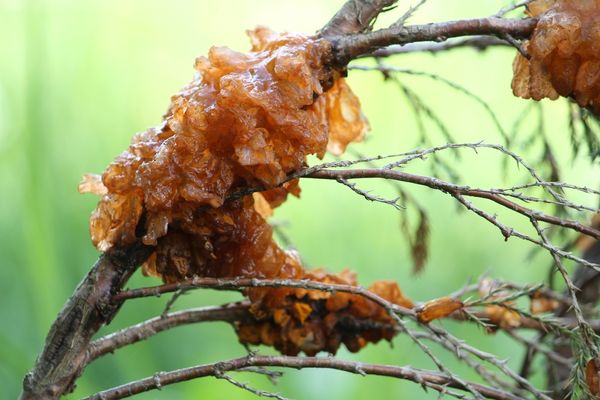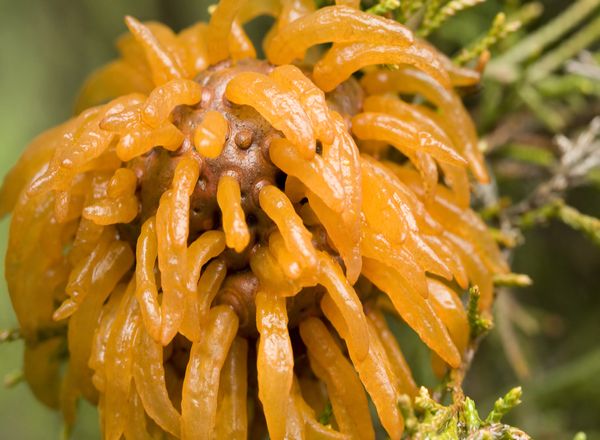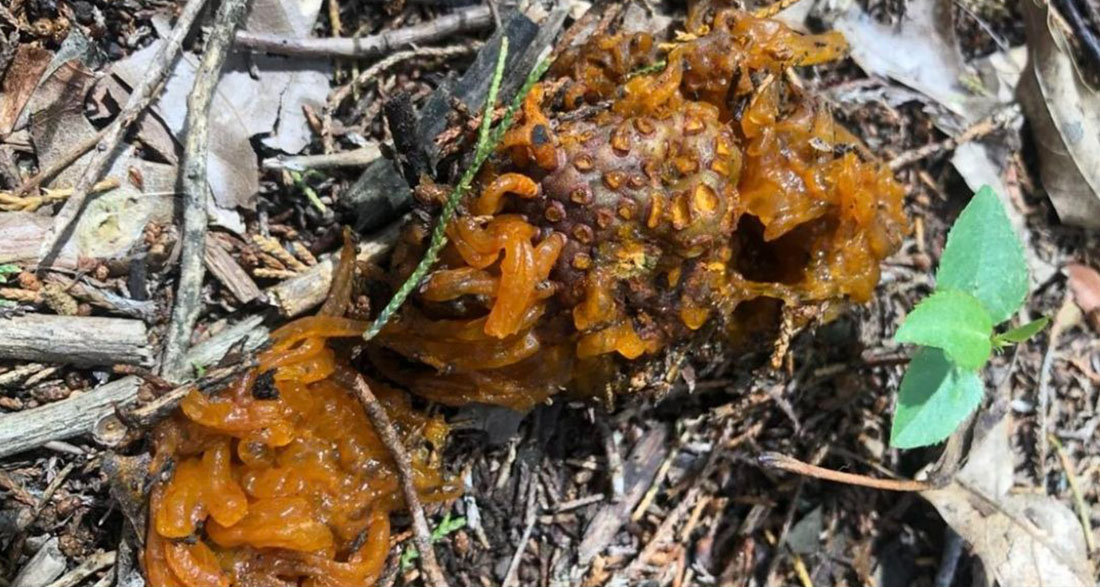Taking care of plants in your backyard can be a fun and rewarding experience, but it can also come with some strange surprises. Recently, a Reddit user from Oklahoma discovered something really weird in their trees:
a bunch of yellow jelly and something they called a “jelly alien nut.” Curious and confused, they turned to the internet community for answers.

The mystery was soon solved. The culprit was identified as cedar-apple rust. This disease needs two types of trees to complete its life cycle: apples or crabapples and juniper trees (even though its name suggests cedar trees).
How to Spot Cedar-Apple Rust
Cedar-apple rust looks different depending on which tree it infects. On juniper trees, you might see brown, bumpy growths, called galls, on the branches. When it gets wet in the spring, these galls sprout orange, jelly-like horns. While these can kill the twig they’re on, they don’t harm the juniper tree overall.
On crabapple or apple trees, you’ll notice yellow spots on the leaves after they bloom. As summer goes on, these spots turn into brownish threads or tubes that can be found under the spots on fruits, twigs, and leaves.

Understanding the Life Cycle
You might be wondering how long this strange disease sticks around. Well, after about seven months, the galls start to form. After 18 months, they become gelatinous lumps. The next spring, these lumps grow telial horns that release spores during rainy weather.
These horns dry up and fall off as spring progresses. The galls remain on the tree for over a year after they die, and the infection is most noticeable in the spring when they’re covered in jelly-like masses.
Dealing with Cedar-Apple Rust
Luckily, dealing with this infection isn’t too hard. You can prune off the affected parts to stop it from spreading. Remember, cedar-apple rust mainly affects the appearance of your plants—it won’t kill your trees. If you want to prevent it, you can choose apple varieties that resist this disease or use fungicides.
In Conclusion
Cedar-apple rust might be an unusual sight in your backyard, but it’s not a serious threat to your trees. Knowing what it is and how to handle it can help you take the right steps if you notice it. Share this knowledge so others can recognize and manage cedar-apple rust too. Happy gardening!
Share your thoughts in the comments down below!

